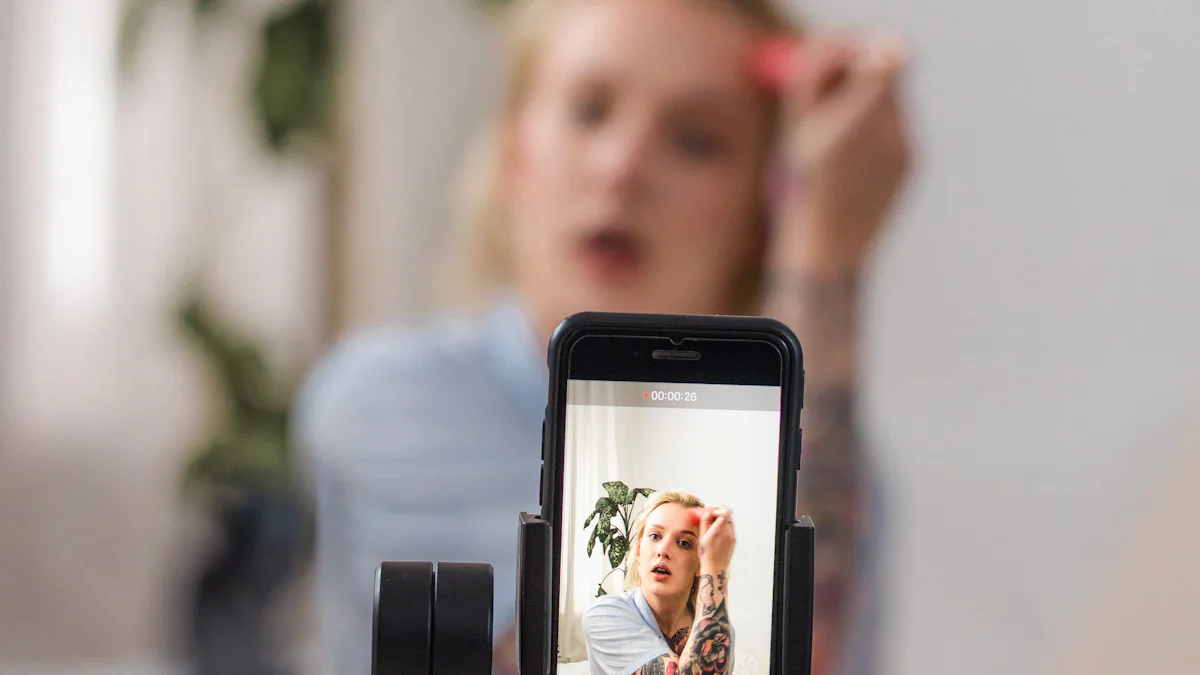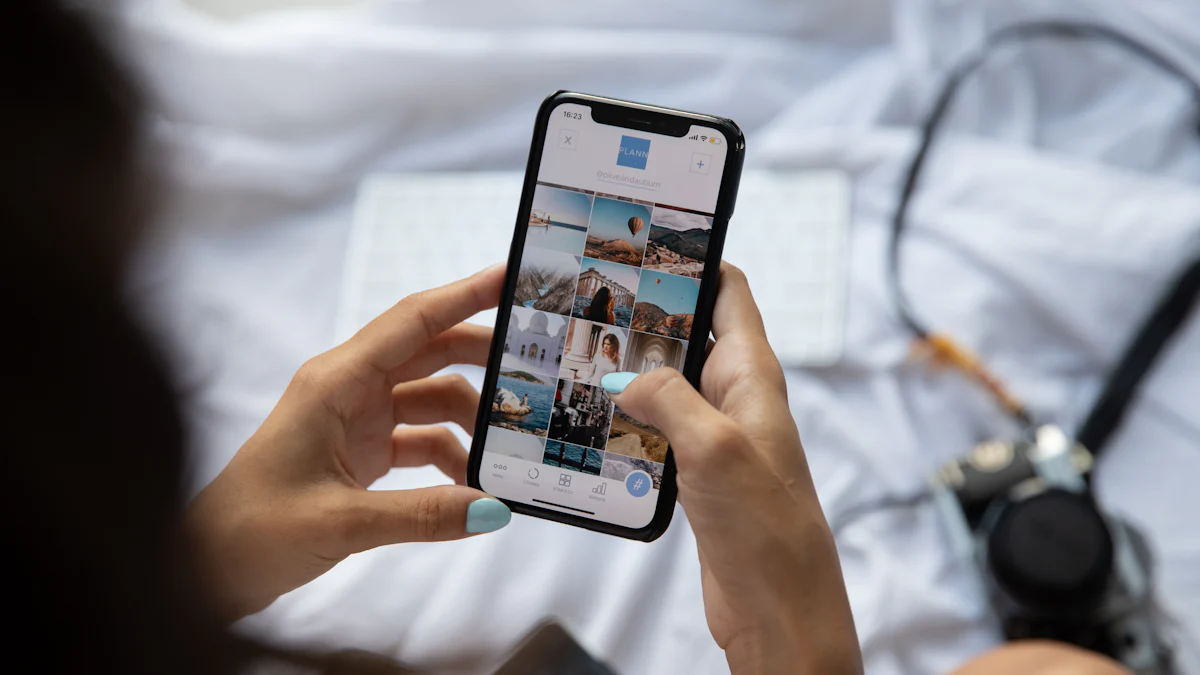Effective Tips for Budgeting Instagram Influencer Campaigns

Budgeting is the backbone of any successful Instagram influencer marketing campaign. Without a clear plan, you risk overspending or failing to achieve your goals. A well-thought-out budget helps you allocate resources wisely, ensuring every dollar works toward your brand's success.
But let’s face it—managing costs can be tricky. You might struggle to define clear goals, pick the right influencers, or even negotiate fair compensation. Tracking performance and measuring ROI adds another layer of complexity. That’s why a solid budget isn’t just helpful—it’s essential. It keeps you focused, maximizes your returns, and ensures you’re not caught off guard by unexpected expenses like fluctuating Instagram influencers cost.
When you budget effectively, you’re not just saving money. You’re setting your campaign up for long-term success.
Understanding Instagram Influencer Marketing and Costs

What is Instagram Influencer Marketing?
Instagram influencer marketing is all about partnering with influencers to promote your brand, products, or services. These influencers have built loyal audiences who trust their recommendations. By collaborating with them, you can tap into their reach and credibility to boost your campaigns.
Think of it as a modern word-of-mouth strategy. Instead of traditional ads, you’re leveraging authentic voices to connect with your target audience. Whether it’s a product review, a tutorial, or a simple shoutout, influencers can create content that resonates with their followers. This approach makes influencer marketing a powerful tool for building brand awareness and driving sales.
Key Factors Influencing Instagram Influencers Cost
When planning your influencer marketing strategy, understanding what drives costs is crucial. Here are the main factors that affect how much you’ll pay:
- Follower Count: Influencers with more followers typically charge higher rates. Micro-influencers (10k-100k followers) are more affordable, while macro-influencers (100k-500k) and celebrities (1M+) demand higher fees.
- Engagement Rate: High engagement rates mean the influencer’s audience actively interacts with their content. This makes them more valuable and allows them to charge more.
- Content Type: The format of the content matters. A simple photo post costs less than a video or reel, which requires more effort.
- Niche: Influencers in specialized niches may charge more due to their highly targeted audiences.
Here’s a quick breakdown of average costs based on follower count:
| Influencer Type | Follower Count | Average Cost Range |
|---|---|---|
| Micro-influencers | 10k - 100k | Lower than macro-influencers |
| Macro-influencers | 100k - 500k | Higher than micro-influencers |
| Celebrities | 1M+ | Highest due to large reach |
On average, you can expect to pay around $10 per post for every 1,000 followers.
Why Budgeting is Essential for Campaign Success
Budgeting is the foundation of any successful influencer marketing strategy. Without it, you risk overspending or failing to achieve your goals. When you determine your budget, you can allocate resources effectively and avoid common pitfalls.
For example, poor budgeting can lead to wasted money on the wrong influencers or misaligned campaigns. You might also face hidden costs, like content production or ad amplification, that throw off your calculations. By setting clear goals and tracking performance, you can ensure every dollar works toward your brand’s success.
A well-planned budget also helps you measure ROI. You’ll know exactly how much you’re spending and what you’re getting in return. This clarity allows you to refine your strategy for future campaigns and maximize your results.
Actionable Tips for Small-Budget Influencer Marketing
Set Clear Campaign Goals
Define your target audience and objectives.
Before diving into small-budget influencer marketing, you need to know who you’re targeting and what you want to achieve. Are you looking to boost sales, grow your Instagram following, or improve your brand’s reputation? Here are some examples of clear, measurable goals:
- Increase sales by 20% within three months.
- Gain 500 new followers on Instagram in one month.
- Achieve a 4-star rating on review platforms within six months.
When you define your objectives, you’ll have a roadmap for your influencer marketing campaigns. This clarity ensures your efforts are focused and effective.
Align goals with your overall marketing strategy.
Your campaign goals should fit seamlessly into your broader influencer marketing strategy. This alignment helps you avoid wasteful spending and ensures every dollar contributes to your brand’s success. For example:
- Regularly evaluate your marketing mix to focus on high-ROI channels.
- Use predictive analytics to forecast trends and fine-tune campaigns.
- Test different approaches (like A/B testing) to maximize conversions.
By syncing your goals with your strategy, you’ll create campaigns that deliver results without breaking the bank.
Identify the Right Influencers
Focus on niche relevance and audience alignment.
Finding the right influencers is critical for small-budget influencer marketing. Instead of chasing big names, look for micro-influencers who align with your brand’s niche. Tools like Sprout Social, Upfluence, and HypeAuditor can help you discover influencers with the right audience demographics and engagement.
Micro-influencers often have high engagement rates, making them ideal for budget-friendly tactics. Their followers trust their recommendations, which can lead to better results for your campaigns.
Evaluate engagement rates and content quality.
Don’t just look at follower counts. High engagement is what drives results. Metrics like Engagement by Reach and Daily Engagement Rate can show how well an influencer connects with their audience. Also, check their content quality. Are their posts visually appealing? Do they align with your brand’s style?
By focusing on engagement rates and content quality, you’ll ensure your campaigns resonate with the right audience.
Negotiate Costs Effectively
Understand standard pricing models (e.g., per post, per story).
Instagram influencers typically charge based on the type of content they create. Here’s a quick breakdown:
| Content Format | Benefits | Drawbacks |
|---|---|---|
| Feed | Evergreen content, high reach | High cost, less organic |
| Reel | Evergreen content, medium reach | Medium cost |
| Story | Low cost, includes CTA (link) | Lower reach, expires in 24 hours |
Knowing these models helps you negotiate terms and fees effectively. Keep in mind that costs can vary by region, niche, and influencer location.
Offer hybrid deals or additional value (e.g., product gifting, affiliate commissions).
If your budget is tight, consider hybrid deals. Combine monetary payment with perks like free products or affiliate commissions. Influencers often appreciate creative perks, and this approach can make your partnership more appealing.
Timing also matters. Start by building a relationship with the influencer before discussing payment. Transparency and flexibility go a long way in creating win-win deals.
Leverage Analytics Tools
Use tools to estimate influencer performance and audience demographics.
When you're working with small-budget influencer marketing, every decision counts. You can't afford to guess which influencers will deliver results. That's where analytics tools come in. They help you evaluate influencer performance and audience demographics, so you can make smarter choices.
Some of the most popular tools for this include Socialinsider, Later, and Social Blade. These platforms let you analyze content pillars, streamline your influencer program, and access detailed statistics. If you're worried about audience authenticity, HypeAuditor is a great option. It detects fake followers and ensures you're reaching real people. For hashtag campaign tracking, Keyhole is a must-try.
Other tools like Traackr and Aspire take things a step further. Traackr helps you manage influencer relationships while providing insights into audience demographics. Aspire uses AI to identify influencers and track their performance. These tools simplify the process and give you the data you need to optimize your campaigns.
Track campaign metrics to refine future budgets.
Tracking metrics is essential for improving your small-budget influencer marketing strategy. It shows you what's working and what isn't, so you can adjust your approach. Start by setting SMART goals—specific, measurable, achievable, relevant, and time-bound. This gives you a clear framework for evaluating success.
Consistent tracking is key. Monitor metrics like engagement rates, reach, and conversions regularly. This helps you spot trends and make real-time adjustments. Attribution modeling is another powerful tool. It combines data from different sources to measure overall campaign effectiveness.
By tracking metrics, you can benchmark your results against previous campaigns. You'll see how your KPIs evolve over time and even compare your performance to competitors. This data helps you refine your budget, ensuring every dollar goes toward strategies that deliver results.
For example, if you notice that instagram stories drive more engagement than feed posts, you can allocate more resources to stories in your next campaign. This approach ensures you're always improving and maximizing ROI.
Strategies for Effective Low-Budget Influencer Campaigns

Opt for Hybrid Deals
Combine monetary payment with product gifting or affiliate commissions.
Hybrid deals are a smart way to stretch your budget while keeping influencers motivated. By combining monetary payments with perks like product gifting or affiliate commissions, you create a win-win situation. Here’s why this approach works so well:
- It provides financial stability for influencers, reducing uncertainty.
- The performance-based aspect encourages influencers to create high-quality content that aligns with your goals.
- Both you and the influencer work toward shared success metrics, making campaigns more effective.
- Flexibility in structuring these deals allows you to adapt them to your specific needs.
- Influencers can earn more through commissions, especially if the campaign performs well.
For example, Premiere Gal partnered with Envato Elements to create a YouTube tutorial. She earned a flat fee and additional income through affiliate links. Similarly, Selae Thobakgale worked with GetSmarter, combining a sponsored post with a promo code for commissions. These hybrid models not only save costs but also build long-term relationships with influencers who consistently deliver results.
Bundle Content Deliverables
Negotiate packages that include multiple posts, stories, or reels.
Bundling content deliverables is another cost-effective strategy for small-budget influencer marketing. Instead of paying for individual posts, negotiate packages that include a mix of posts, stories, and reels. This approach maximizes your reach while keeping costs manageable.
Here’s a quick look at common content bundles:
| Content Type | Specifics |
|---|---|
| Static Images | Usage rights, exclusivity |
| Videos | Content specifics |
| Stories | Repurposed content considerations |
| Blog Posts | Content type negotiations |
By bundling, you get more value for your money. For instance, an influencer might agree to create one reel, two stories, and a static post for a discounted rate. This ensures consistent exposure for your brand across different formats, making your campaign more impactful.
Focus on Engagement Metrics
Prioritize influencers with high engagement rates over follower count.
When choosing influencers, don’t get distracted by follower counts. Engagement metrics are far more reliable for evaluating an influencer’s effectiveness. Micro-influencers, for example, often have engagement rates between 5% and 20%, compared to just 1% to 3% for macro-influencers.
Why does engagement matter?
- It shows how well an influencer connects with their audience.
- High engagement rates mean the content resonates, which can boost brand loyalty.
- Tracking engagement helps you identify which influencers drive the most ROI.
Micro-influencers are especially valuable for small-budget influencer marketing. Their smaller but highly engaged communities often lead to better results. Stories, in particular, are a great way to leverage this engagement. They’re interactive, include CTAs, and feel more personal to the audience.
By focusing on engagement metrics, you’ll ensure your campaigns are both impactful and cost-effective.
Repurpose Influencer Content
Use influencer-generated content across other marketing channels.
You’ve already invested in influencer content, so why not make the most of it? Repurposing influencer-generated content is a smart way to stretch your budget and amplify your campaign’s impact. Instead of letting that amazing post or reel fade into the Instagram abyss, you can breathe new life into it by sharing it across other platforms.
Here’s why repurposing works so well:
- Evergreen content: Influencer content often stays relevant long after it’s created. By repurposing it, you can keep driving traffic and engagement over time.
- Cross-platform promotion: Sharing content on multiple platforms—like Facebook, TikTok, or even email newsletters—boosts your reach and brand visibility. Each platform has unique strengths, and repurposing lets you tap into all of them.
- Cost-efficient production cycle: Once the content is made, you don’t need to spend extra on creating new material. This saves money while keeping your marketing fresh.
Many brands have nailed this strategy. For example, Dunkin' Donuts partnered with influencer Charli D’Amelio to promote a special edition drink. They didn’t stop at Instagram. They shared her content across their social media channels, which helped sell hundreds of thousands of drinks in just five days. This shows how repurposing influencer content can drive massive results.
So, how can you do it? Start by identifying the original purpose of the content. Was it meant to showcase a product or tell a story? Next, think about how you can adapt it for other campaigns. For instance, you could turn an influencer’s Instagram reel into a TikTok video or use their testimonial in a paid ad.
Repurposing isn’t just about saving money—it’s about maximizing the value of what you already have. With a little creativity, you can turn one piece of content into a multi-channel powerhouse.
Common Mistakes to Avoid in Influencer Marketing
Choosing Influencers Based Solely on Follower Count
It’s tempting to pick influencers with massive follower counts, but this can backfire. Bigger doesn’t always mean better. Many influencers inflate their numbers by purchasing fake followers. This creates the illusion of reach but delivers little value to your brand.
Here’s what can go wrong:
- Fake followers won’t engage with your content or buy your products.
- You might overlook content quality, leading to poor engagement.
- Your campaign could fail to connect with your target audience.
Instead, focus on engagement rates and audience alignment. A micro-influencer with 20,000 followers and a loyal, engaged audience can drive better results than someone with 1 million disengaged followers. Always prioritize quality over quantity.
Failing to Set Clear KPIs
Without clear KPIs, you’re flying blind. How will you know if your campaign is working? Setting measurable goals helps you track success and refine your strategy.
Some common KPIs for influencer marketing include:
- Reach & Awareness: Impressions, reach, and audience growth.
- Engagement: Likes, comments, shares, and engagement rate.
- Traffic & Conversions: Website traffic and conversion rates.
- Sales & ROI: Revenue generated from the campaign.
For example, if your goal is to boost sales, track how many products sell through influencer promotions. If you want more visibility, monitor reach and brand mentions. Clear KPIs keep your campaign focused and effective.
Ignoring Hidden Costs
Hidden costs can sneak up on you and derail your budget. It’s not just about paying the influencer. Other expenses can add up quickly, such as:
- Content production fees.
- Usage rights for influencer-generated content.
- Travel and logistics for the influencer.
- Product samples or gifts.
- Time spent managing the campaign.
To avoid surprises, plan for these costs upfront. For instance, if you’re sending products to influencers, factor in shipping fees. If you want exclusive rights to their content, negotiate those terms early. A detailed budget ensures you stay on track and maximize your brand’s ROI.
Overlooking Contractual Agreements
Ensure clear terms for deliverables, timelines, and usage rights.
Skipping over contracts can lead to misunderstandings and costly mistakes. You might assume the influencer knows what you expect, but assumptions often cause problems. A solid contract protects both you and the influencer. It ensures everyone is on the same page about deliverables, deadlines, and content usage.
Here’s what you should include in your agreements:
- Deliverables: Be specific about what the influencer will create. Will it be one Instagram post, three stories, or a reel? Outline the format, style, and any key messages they need to include.
- Timelines: Set clear deadlines for when the content should be delivered and posted. This keeps your campaign on track and avoids last-minute delays.
- Usage Rights: Decide how you’ll use the influencer’s content. Can you repurpose it for ads or other platforms? Specify the duration and scope of these rights to avoid legal issues later.
Pro Tip: Always include a clause about revisions. If the content doesn’t meet your expectations, you’ll want the option to request changes.
A well-written contract also helps you avoid hidden costs. For example, if you plan to use the influencer’s content in paid ads, negotiate those terms upfront. Without this, you might face extra fees later.
Here’s a quick checklist for your influencer contracts:
| Key Element | Why It’s Important |
|---|---|
| Deliverables | Ensures clarity on what’s being created |
| Timelines | Keeps the campaign on schedule |
| Usage Rights | Avoids disputes over content ownership |
| Payment Terms | Prevents confusion about compensation |
| Revision Policy | Allows for adjustments if needed |
Taking the time to draft a detailed contract might feel tedious, but it saves you headaches down the road. It builds trust with the influencer and ensures your campaign runs smoothly. So, don’t skip this step—it’s worth it!
Budgeting for Instagram influencer marketing doesn’t have to feel overwhelming. By setting clear goals, choosing the right influencers, and tracking your results, you can create compelling campaigns that boost your brand awareness and drive real results. Remember, it’s not just about spending less—it’s about spending smarter.
When you focus on engagement and use tools to measure effectiveness, you’ll see how calculating ROI becomes easier. These strategies help you maximize your budget while building a stronger connection with your audience. So, take these tips and start crafting campaigns that truly elevate your brand.
Ready to take your influencer marketing to the next level? Start small, stay focused, and watch your efforts pay off!
FAQ
What is the best way to start with influencer marketing on a small budget?
Start by setting clear goals and identifying micro-influencers in your niche. Focus on engagement rates instead of follower counts. Negotiate hybrid deals like product gifting or affiliate commissions. Use analytics tools to track performance and refine your strategy for future campaigns.
How do I know if an influencer is the right fit for my brand?
Look for influencers whose audience aligns with your target market. Check their engagement rates and content quality. Tools like HypeAuditor can help you verify their audience demographics and authenticity. Always prioritize relevance and trust over follower numbers.
Can I run a successful campaign without spending a lot of money?
Yes, you can! Focus on micro-influencers with high engagement rates. Bundle content deliverables to maximize value. Repurpose influencer-generated content across other platforms. These strategies make influencer marketing effective even with a limited budget.
How do I measure the success of my influencer marketing campaign?
Track metrics like engagement rates, reach, conversions, and ROI. Use tools like Social Blade or Aspire to monitor performance. Set clear KPIs before starting your campaign to evaluate its effectiveness and make data-driven adjustments.
What are some common mistakes to avoid in influencer marketing?
Avoid choosing influencers based only on follower count. Don’t skip setting clear KPIs or tracking hidden costs. Always use contracts to outline deliverables, timelines, and usage rights. These steps help you avoid costly errors and ensure campaign success.
See Also
Harnessing Instagram's Tools for Effective Brand Content
Seven Essential Steps for Influencer Marketing Success
Excelling with Instagram's Branded Content Features
